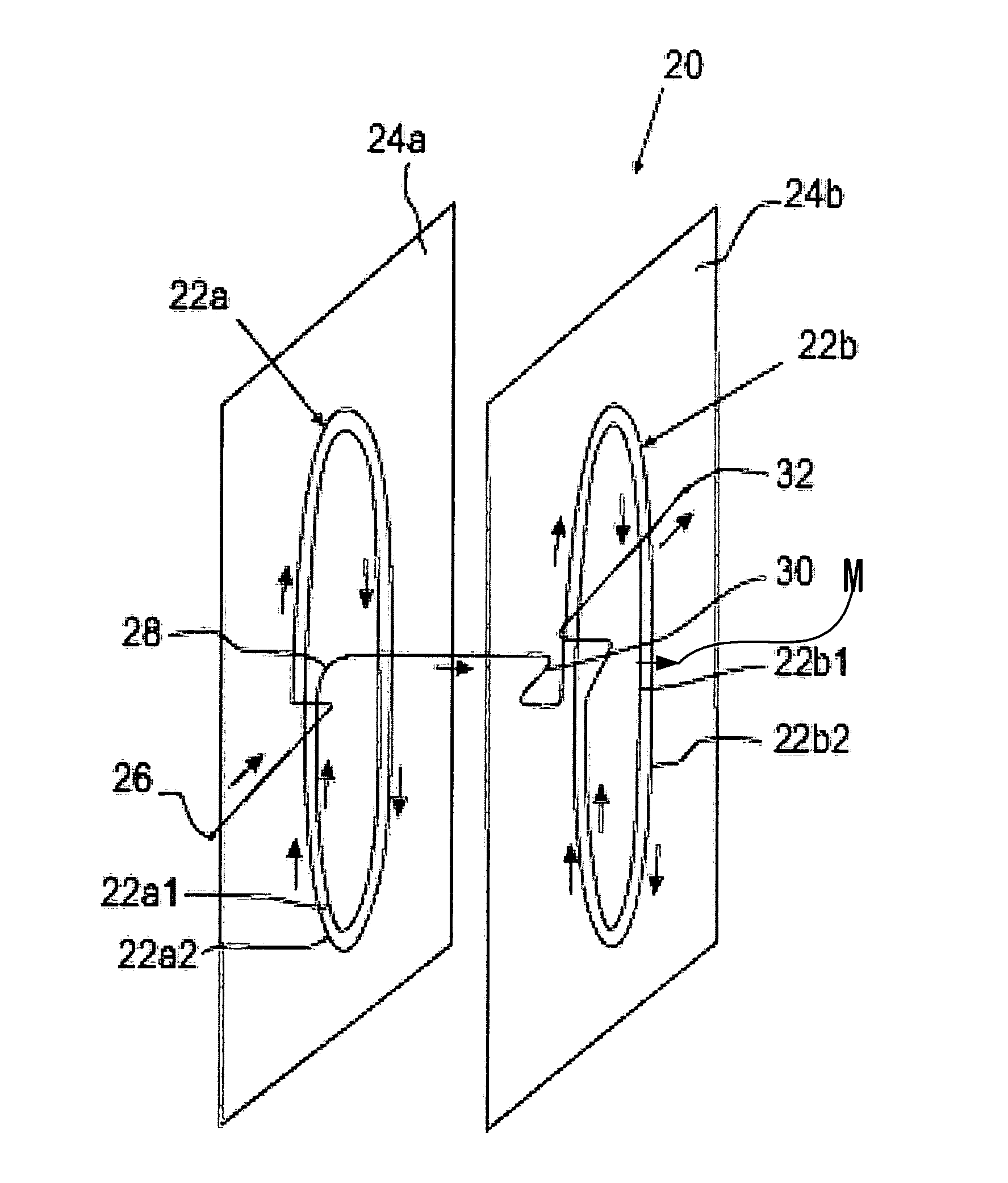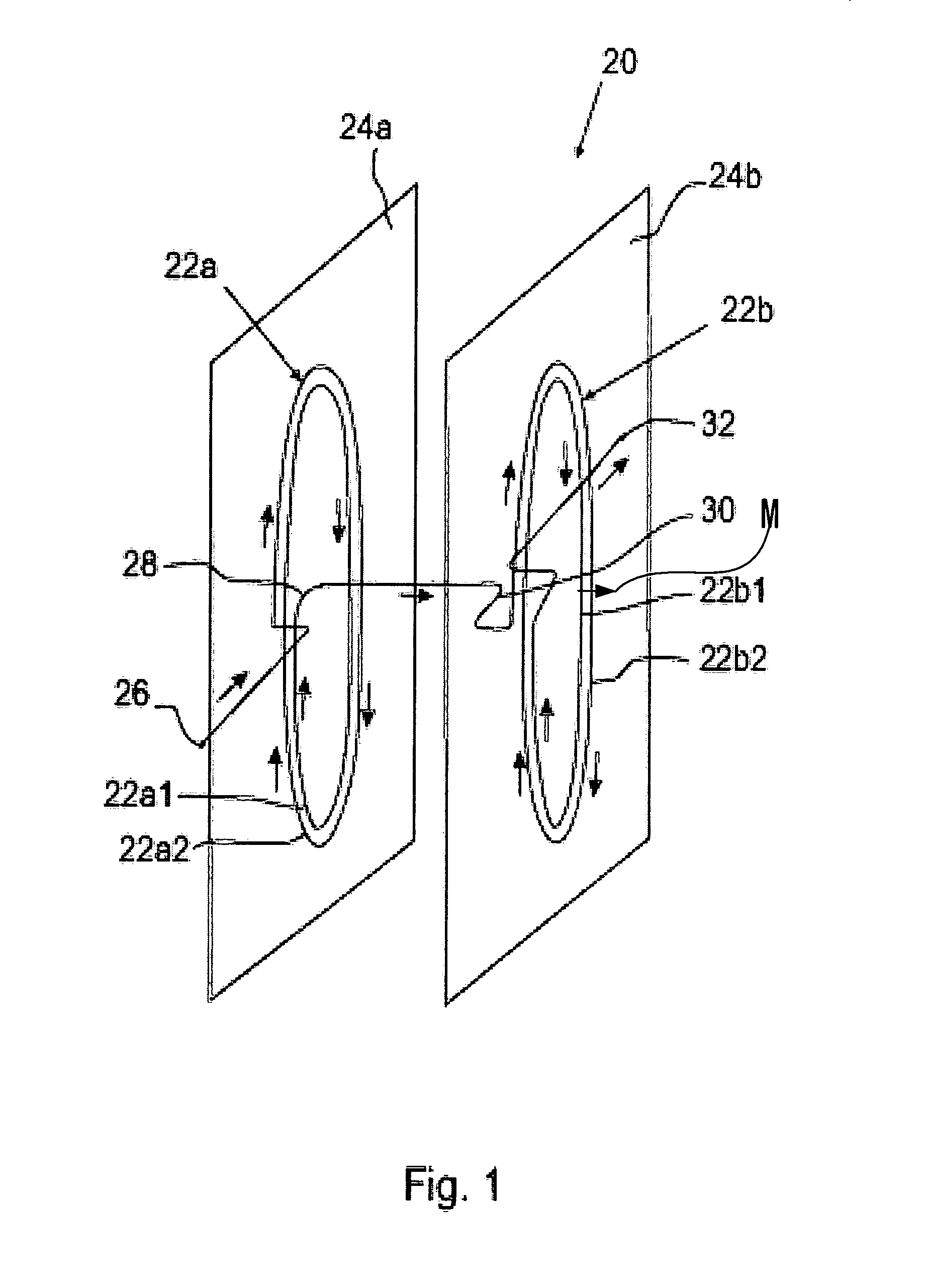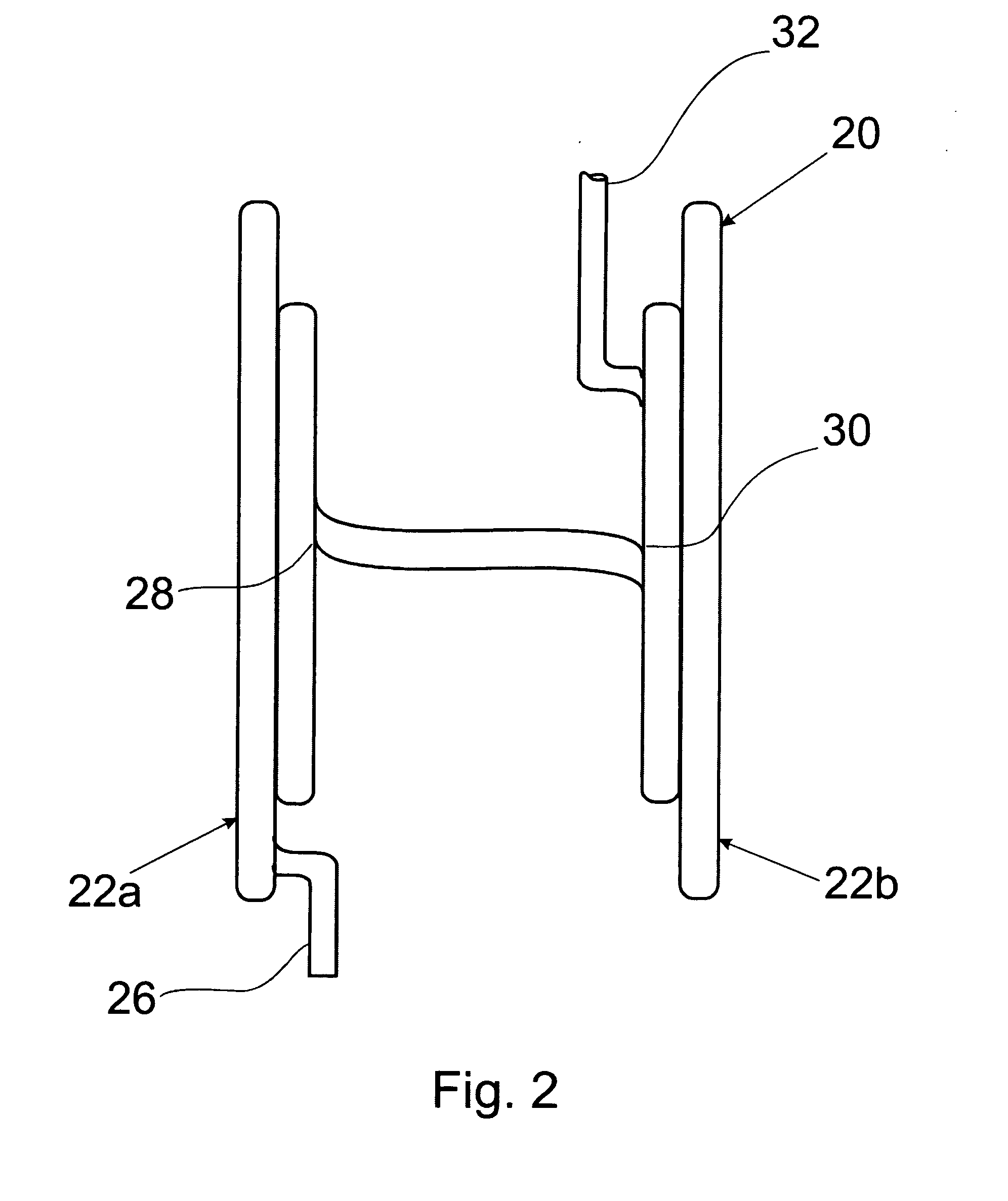RF antenna assembly for treatment of inner surfaces of tubes with inductively coupled plasma
- Summary
- Abstract
- Description
- Claims
- Application Information
AI Technical Summary
Benefits of technology
Problems solved by technology
Method used
Image
Examples
Embodiment Construction
[0041]An example of an antenna assembly of the invention for application of a protective coating onto the inner surface of a tube by means of a PECVD process will now be described with reference to the accompanying drawings.
[0042]Since the transversal RF antenna is the heart of the invention, let us first consider this antenna in more detail.
[0043]The inventor herein has found that in contradiction with the generally accepted erroneous viewpoint that the magnetic field of a solenoid has maximum strength on the longitudinal axis thereof, in reality the strength of the magnetic field on the longitudinal axis of the solenoid is minimal, while the main part of the lines of the magnetic flux is concentrated near the inner area solenoid winding. In order to check this statement it is sufficient to consider a magnetic field of a circular turn through which a current flows and then to summarize (integrate) the result over the solenoid length. Contrary to this, an electric field generated in...
PUM
| Property | Measurement | Unit |
|---|---|---|
| Angle | aaaaa | aaaaa |
| Flow rate | aaaaa | aaaaa |
| Magnetic field | aaaaa | aaaaa |
Abstract
Description
Claims
Application Information
 Login to View More
Login to View More - R&D
- Intellectual Property
- Life Sciences
- Materials
- Tech Scout
- Unparalleled Data Quality
- Higher Quality Content
- 60% Fewer Hallucinations
Browse by: Latest US Patents, China's latest patents, Technical Efficacy Thesaurus, Application Domain, Technology Topic, Popular Technical Reports.
© 2025 PatSnap. All rights reserved.Legal|Privacy policy|Modern Slavery Act Transparency Statement|Sitemap|About US| Contact US: help@patsnap.com



